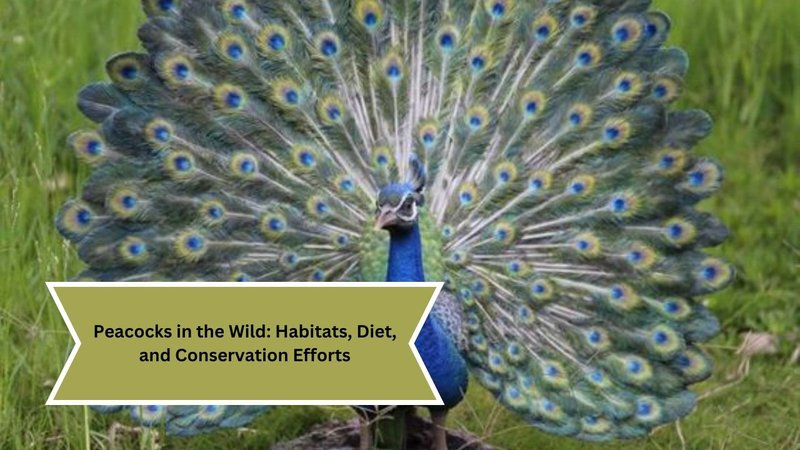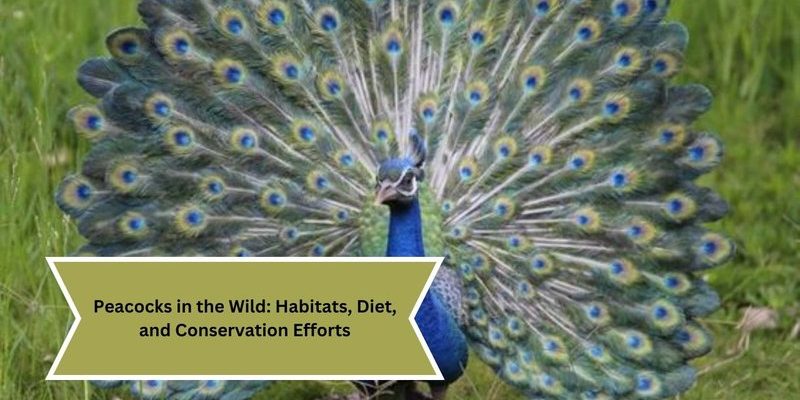
How do we go about saving such a magnificent creature? That’s where conservation comes in. It’s not just about placing a few peacocks in a zoo and calling it a day. Think of conservation as a complex puzzle, where each piece—habitat protection, community involvement, and legislative support—fits together to create a complete picture of survival. Let’s dig deeper into the conservation efforts aimed at protecting peacocks and why they matter.
The Importance of Peacocks in the Ecosystem
Peafowls aren’t just pretty birds; they play essential roles in their ecosystems. You might be wondering how a bird can impact the environment. Well, by foraging for food, peacocks help with seed dispersal. When they eat fruits and seeds, they spread these plants throughout their territory, promoting biodiversity. It’s like when you share a delicious snack with friends—everyone benefits!
Moreover, peafowls are a part of the food chain. They help maintain the balance by being prey for larger predators. If peacocks were to disappear, it could disturb this balance, leading to overpopulation of certain species and the decline of others. Protecting peafowls means taking care of many other species in their habitat too.
Threats Facing Peacocks
Despite their beauty, peacocks face several threats that jeopardize their survival. One of the biggest issues is habitat loss. As urban areas expand and agriculture takes over, peacocks lose their natural living spaces. Imagine being forced to move from your home because of construction—it’s a tough situation for any wildlife.
Additionally, poaching is another severe threat. In some cultures, peacock feathers are highly prized for decoration and religious ceremonies. This demand leads to illegal hunting, which further endangers peacock populations. Lastly, climate change poses a subtle but critical threat, affecting their breeding patterns and food availability. Understanding these challenges is the first step toward finding effective solutions.
Habitat Protection Initiatives
One of the most significant conservation strategies is habitat protection. Various organizations are establishing reserves and protected areas where peacocks can thrive without the pressures of human encroachment. These areas serve as safe havens, much like a refuge for weary travelers.
Efforts also involve restoring degraded habitats. For example, replanting native vegetation helps create a balanced environment for peafowls and other wildlife. When conditions improve, you’ll often see more animals returning to those areas, just like how a garden flourishes with care and attention.
Community Involvement in Peacock Conservation
It takes a village to protect these stunning birds, and that’s where community involvement comes in. Local communities play a pivotal role in peacock conservation efforts. Many organizations are working alongside residents to educate them about the importance of peacocks and their significance in culture and the ecosystem.
When communities are engaged, they begin to value their local wildlife more. People start to see peacocks as a part of their heritage—something worth protecting. Some initiatives include creating eco-tourism opportunities, where locals can benefit economically while preserving their natural resources. This creates a win-win situation for both the peacocks and the community, fostering a sense of pride and responsibility.
Legislative Measures for Protection
Legislation is another essential tool in the conservation toolbox. Governments can create laws to protect peacocks and their habitats. For example, establishing wildlife protection acts can make hunting and trading peafowl illegal, discouraging poachers.
Policy changes can also promote better land-use practices that minimize habitat loss. Effective regulations can help protect natural resources while allowing for sustainable development. Think of it as finding a balance between modern needs and nature’s wellbeing.
Research and Monitoring Efforts
Ongoing research is critical in understanding peacock populations and their needs. Scientists and conservationists conduct studies to monitor their numbers and health. By tracking these birds, they can identify trends and threats, allowing for timely interventions.
For example, using technology like GPS tracking helps gather data on peacock movements and behaviors. It’s like putting a GPS on your pet to understand their habits better. This research is vital for shaping future conservation strategies and ensuring that efforts are both effective and relevant.
The Role of Zoos and Conservation Programs
Zoos and conservation organizations play a significant role in protecting peacocks through breeding programs. These programs aim to ensure genetic diversity and boost numbers, helping to safeguard the species against extinction. Some zoos even work on reintroducing peacocks back into the wild when conditions are suitable.
Plus, educational programs at zoos raise awareness among visitors about the importance of peacock conservation. When people learn about these majestic birds, they’re more likely to support conservation efforts and make more informed choices in their daily lives.
How You Can Help Peacock Conservation
You might be thinking, “What can I do to help?” Every little action counts! Here are some simple ways to contribute to peacock conservation:
- Support local and international wildlife organizations working to protect peacocks.
- Spread the word about the importance of conservation in your community.
- Practice responsible tourism, such as visiting eco-friendly parks and reserves.
- Participate in local conservation projects or volunteer opportunities.
- Educate yourself and others about the challenges facing peacocks and their habitats.
Each step you take can make a difference, and collectively, we can help ensure that peacocks continue to grace the skies.
In conclusion, the conservation efforts aimed at protecting the peacock are vital not only for the survival of this beautiful bird but also for the health of ecosystems they inhabit. From habitat protection to community involvement and robust legislation, every effort plays a role. So, next time you catch a glimpse of a peacock, remember there’s a bigger story at play—one that we can all be a part of. Together, let’s make sure that the future remains bright and colorful for these magnificent creatures.

